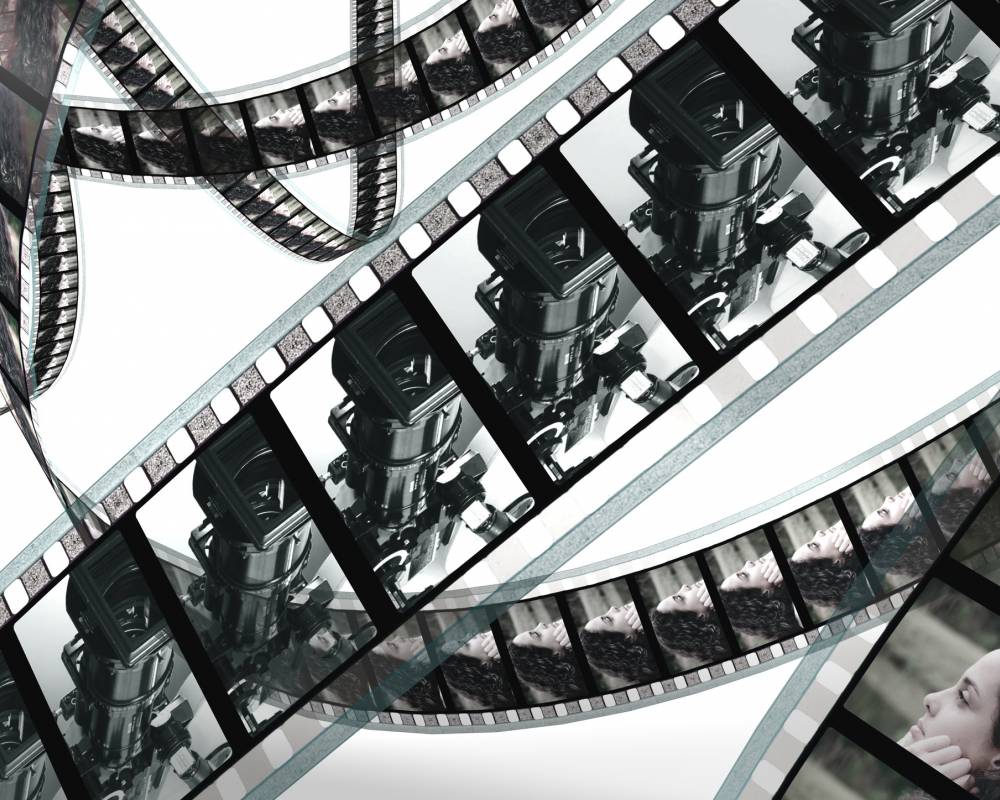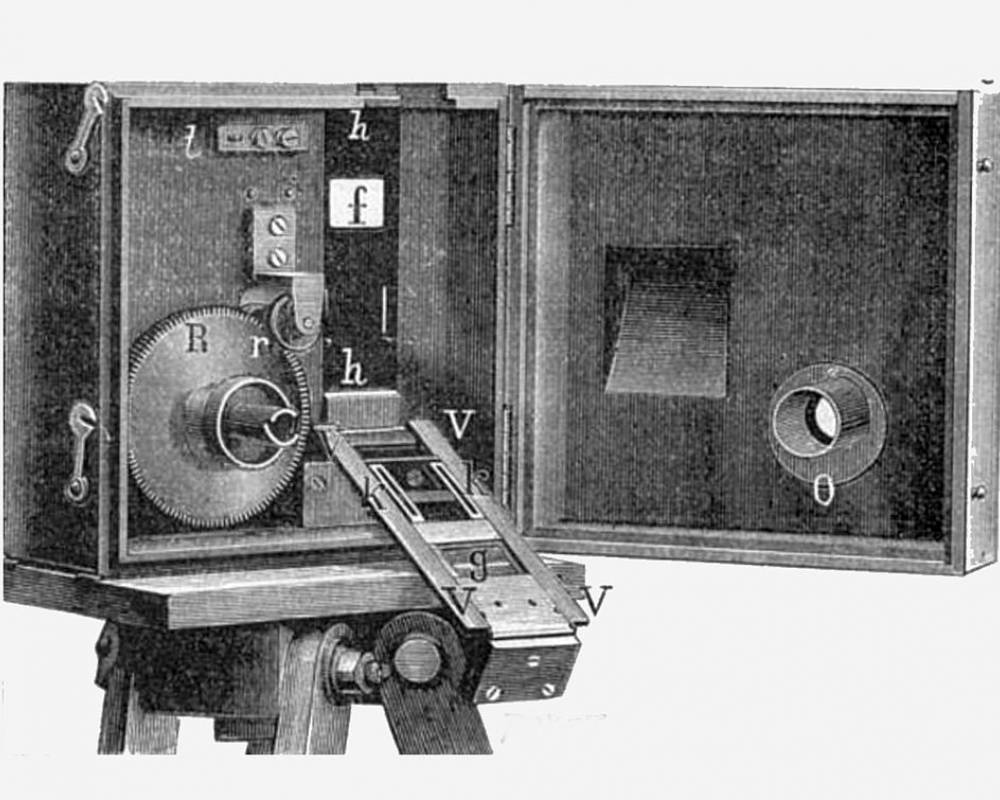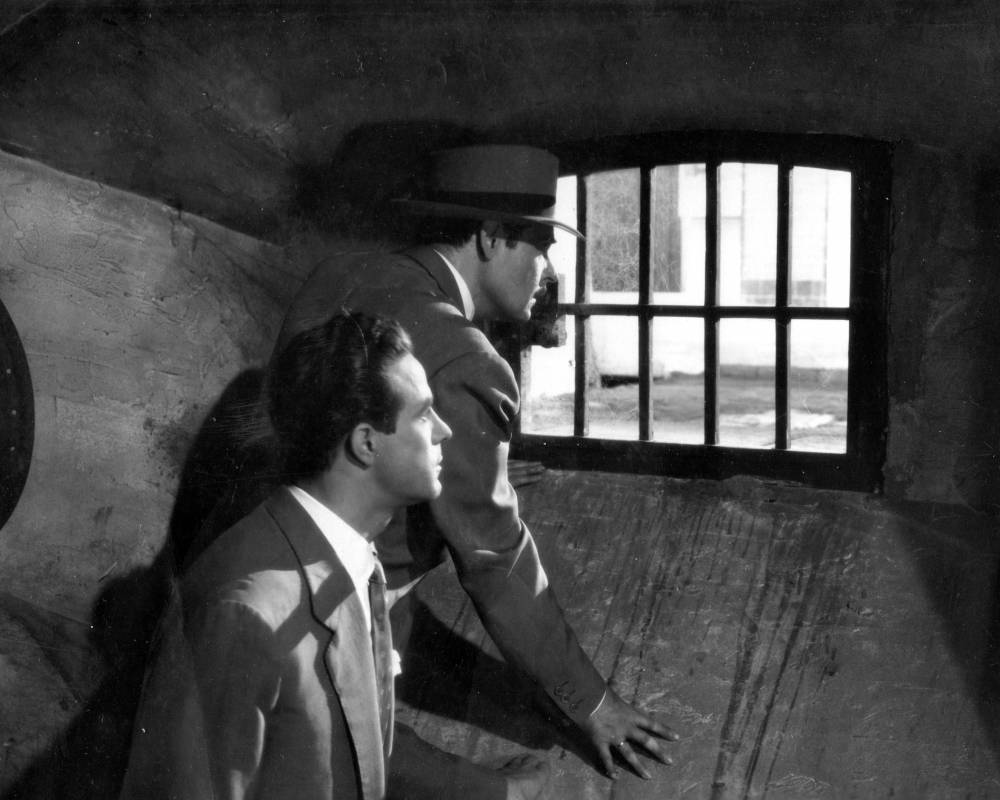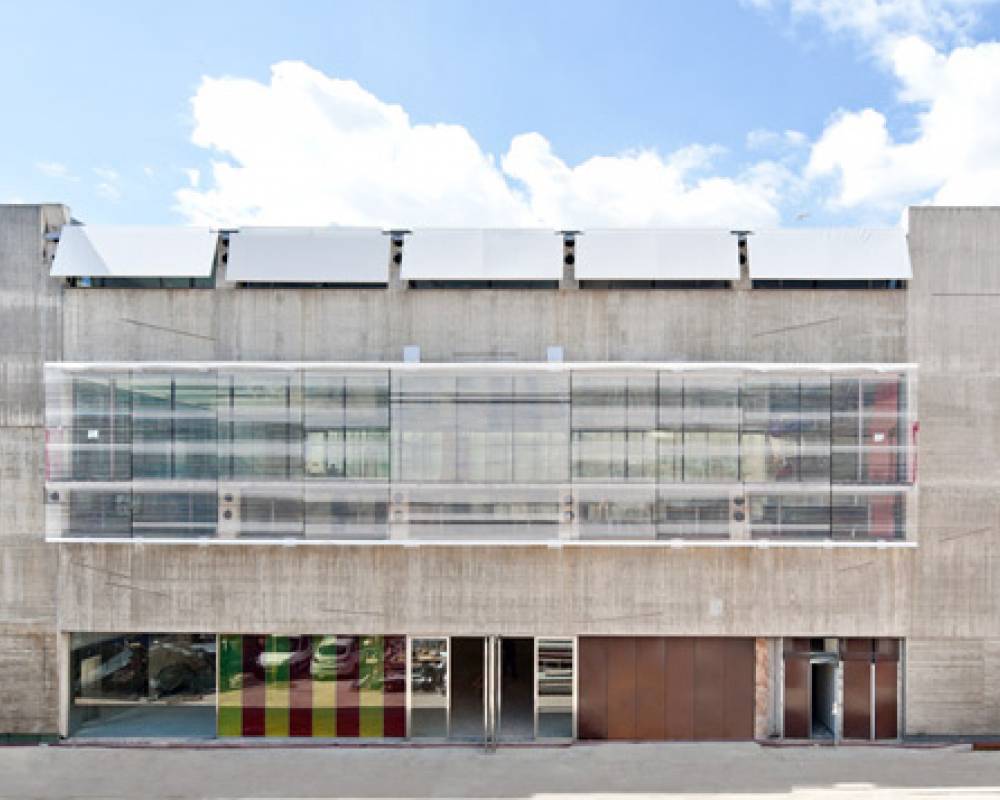
Lyon had the film Workers Leaving the Lumière Factory by the Lumière brothers, in Catalonia we have “Baralla en un cafè”.
It was in 1897 when a bar in the Sants neighbourhood was the setting chosen by the versatile Fructuós Gelabert to film what is considered the first fiction film in the history of Catalan and Spanish cinema.
In the last years of the 19th century and the start of the 20th, the name Fructuós Gelabert was added to others such as Segundo de Chomón, an Aragonese director who moved to Catalonia and who was a pioneer in fantasy and animated films; Baltasar Abadal, pitchman, producer and distributor of films throughout Catalonia; Albert Marro, who specialised in documentaries and Ricard de Baños, filmmaker and founder of the Hispano Films production company. Until the end of the 1920's, Catalan cinema, which was a pioneer in Spain, went through a golden age.
The cinematographer Lumière. Wikimedia Commons. CC BY-SA 3.0

The early days were full of hope: with the Second Spanish Republic and the restoration of the Generalitat, a film industry started developing fast in Catalonia.
In 1931 Orphea Films was founded, the third most important production company in Spain and the first in the country that allowed the production of sound pictures, producing El Cafè de la Marina by Domènec Pruna, which is considered to be the first film in Catalan.
These were years characterised by intense production of films and great public success: Barcelona had 116 picture houses. The outbreak of the Spanish Civil War cut short this effervescence but it did not mean the end of the cinema, far from it.
These years were dominated by documentaries and propaganda newsreels. In spite of that, there were noteworthy films with a pronounced social focus, such as Aurora d’Esperança, by Antonio Sau (1937) and Barrios bajos, by Pedro Puche (1937).
Censorship, restrictions and protectionism were the defining characteristics of Spanish and Catalan cinema in the post-war period. The Franco regime was particularly sensitive to themes related to morals, politics and religion. All Spanish films had to be filmed in the Spanish language and foreign productions had to be dubbed.
In a less hostile context, Catalan cinema placed its hopes on commercial films and placed less money into its productions. This was the era of filmmakers like Pere Pujades, Manuel Blay, Fèlix de Pomés and Francesc Gibert and the development of darker cinema with titles such as Manos sucios, El cerco, A sangre fría and Apartado de correos 1001.
"Apartado de correos 1001” / © Filmoteca de Catalunya

During the 60's, there were two important names in Catalan and Spanish cinema: Ignacio F. Iquino, head producer at the production company I.F.I, and Antonio Isasi-Isasmendi, editor, writer and director.
Thanks in no small part to Iquino and I.F.I, during this period Barcelona was producing 25% of Spanish cinema output and had just produced the first film shot and shown in Catalan: Maria Rosa, by Armando Moreno, in 1965.
Furriers with long experience in business, the Balcázar family didn't waste any time in erecting an American town in Esplugues de Llobregat to take advantage of the shooting of so-called “spaghetti westerns”. Producciones Cinematogràficas Balcázar and Esplugas City accommodated the shooting of more than 200 films with Arizona Colt at the top of the list.
The mid 60's were also the era of the so-called “Barcelona School” films, a “sophisticated” style of cinema, not at all like the folklore-style movies that dominated in Madrid: Dante no es únicamente severo, Fata Morgana, Nocturno 29, Ditirambo and El cadàver exquisito are some of the most iconic examples of this era.
Actors, directors, special effects people, make-up artists, directors of photography... There are plenty of Catalans in the cinema industry who have worked and found success outside our borders:
Salvador Dalí: Colleague of Luis Buñuel, also took part in some of the productions of his good friend, Walt Disney. The film Destiny, which was recently recovered, is a good example of this professional relationship.
Xavier Cugat: Musician, cartoonist, actor and public relations specialist, who introduced tropical sounds to the United States. The actor Rodolfo Valentino opened up the doors of Hollywood for him. He took part in more than fifty films, one of which was City Lights by Charlie Chaplin (1931) and he also produced and directed a few.
Néstor Almendros: One of the most reputed directors of photography. His professional career took him to Cuba, France and the United States. He took part in films like The Little Savage and The Story of Adele H. by François Truffaut, Days of Heaven by Terence Malick, (which won the Academy Award for Best Cinematography in 1978), Kramer versus Kramer, Under Suspicion and Billy Bathgate.
Assumpta Serna, Jordi Mollà, Oscar Jaenada, Jaume Collet-Serra, Àlex and David Pastor, David Martí and Montse Ribé, Sergi López and Isabel Coixet are the names of other Catalans who have distinguished themselves in various fields of the cinematography.
Salvador Dalí. Roger Higgins / Wikimedia Commons. Public Domain
Xavier Cugat. Metro-Goldwyn-Mayer / Wikimedia Commons. Public Domain
Oscar Jaenada. Rastrojo / Wikimedia Commons. CC BY-SA 3.0
The Napoleon studio, founded in 1892, showed pictures, miniatures, painted photographs and daguerreotypes of Barcelona's high society. The business was so successful that, in 1893, the Napoleon studio was known as “the palace of photography”. But the studio can also be considered the first cinema in Catalonia, as it was the place chosen by the Lumière brothers to present their revolutionary invention for the first time in Catalonia: the cinematograph.
The Napoleon was in use until 1933 in the spot occupied today by the Frontó Colom, on the Rambla de Santa Mònica. We can consider it as being on the list of historic cinemas in the city that have either disappeared or been restored from top to bottom.
Here are some of the cinemas that have made history in Barcelona: Fémina (Passeig de Gràcia), Fantasio (Passeig de Gràcia), Savoy (Passeig de Gràcia), Catalunya i Vergara (Pl. Catalunya), París (Portal de l'Àngel), Astoria (c. París), Montecarlo (c. Provença), Palau del Cinema (Via Laietana), Arcadia (c. Tuset), Balmes (Pl. Molina), Rívoli (Meridiana) i Tívoli (c. Casp).
And some of the old cinemas that have survived: Aribau, Floridablanca, Coliseum, Alcàzar, Rex, Urgell and Comèdia.
Cinema Astoria. Color sèpia / Wikimedia Commons. Public Domain
Cinema Comèdia. Color sèpia / Wikimedia Commons. Public Domain
In February 2012, the new headquarters was inaugurated for the Filmoteca de Catalunya, located at the heart of El Raval.
The new building was born of the desire to be a multi-purpose centre focussing on the world of cinema. It has two projection rooms, christened “Chomón” (375 seats) and “Laya” (180 seats). This was done to pay homage to two of the great pieces of heritage of this institution: the105 films made by Segundo de Chomón, pioneer of silent film in Catalonia and the cinema section of the republican Generalitat.
The goal of the Filmoteca de Catalunya is the preservation and screening of cinematographic heritage and culture; the recovery, preservation, cataloguing and restoration of film and documentary heritage and supporting the screening of cinematographic culture with special attention given to Catalan production and cinematographic culture.
It is run by the Department of Culture and, since 2002, has been a member of the Institut Català de les Indústries (ICIC).
New Filmoteca de Catalunya. © Filmoteca de Catalunya
